
The Tōdai-ji is one of the most impressive temples in Japan. It is located west of Nara, at the foot of Mount Wakakusa, about 1h from Kyoto. I remember his discovery as if it was yesterday. That was in May 2010. Flo had also discovered it 15 days before me and we both had the same impressions. One can only feel very small in front of the imposing wooden building, the Daibutsu-den, which is still the largest wooden building in the world today! So we understand why the Tōdai-ji is so famous! It is also classified as a UNESCO World Heritage Site.
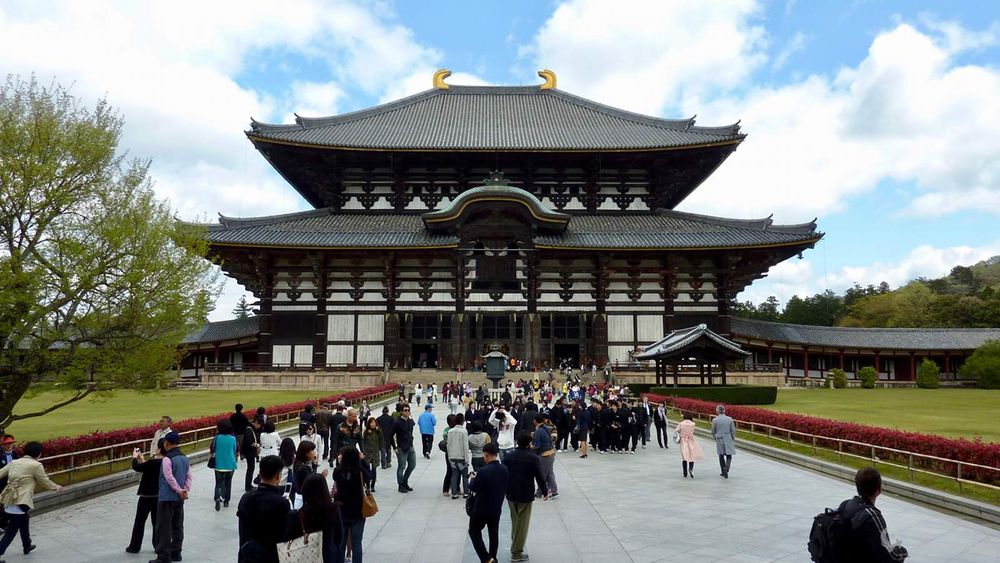
Summary
1The first door of the Tōdai-ji: Nandai-mon
To get to the Tōdai-ji complex, you must first pass through the large wooden door of Nandai-mon. It is situated at the end of a wide and long driveway 230 meters long bordered by a beautiful park. The door is guarded by two muscular statues of 8.4 meters high representing the two kings of the Tōdai-ji, called "Ni-ō".
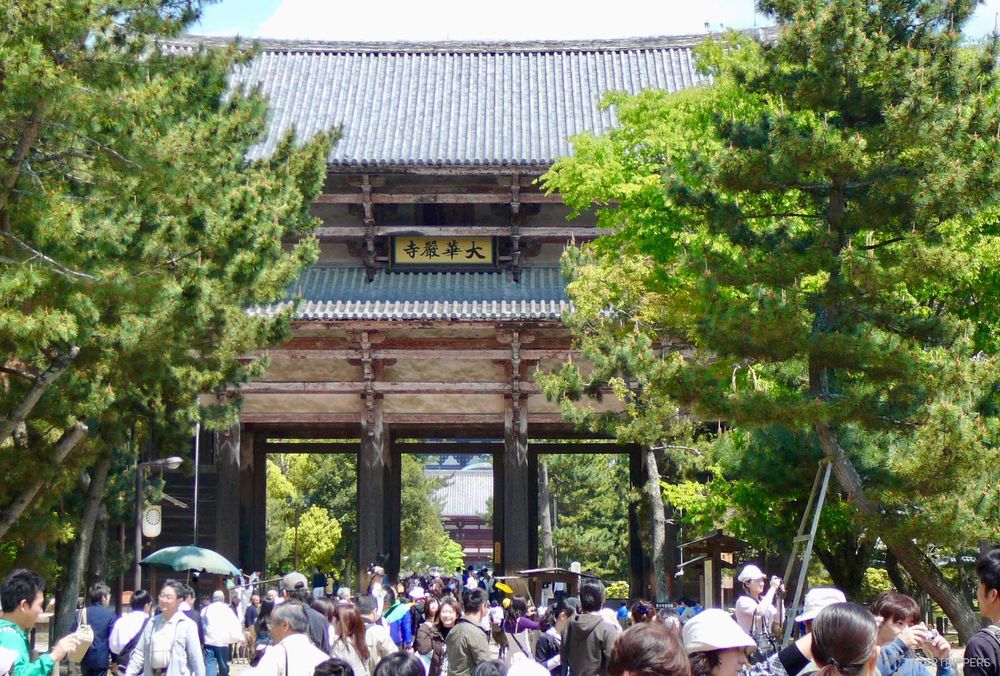
The walk along the driveway to the Daibutsu-den is very pleasant and pleasant, especially in spring. Don't be surprised to find yourself among the crowd. The site is very popular and many tourists (Japanese or foreigners) come to visit this famous place as well as a good number of classes during the school trip. In fact, you may be alpaced by children in colored hats (primary school) or teenagers in uniform (colleague or high school) who have some questions to ask you. Get ready for the game and they'll be happy to ask you their questions and practice their English!
During your walk, you will certainly be surprised to see deer everywhere! In Nara, as on the island of Miyajima, fallow deer are at large in the city and have become very accustomed to man. They're not wild at all and you can get close enough to them. Deer are mainly concentrated towards the parks at the foot of Mount Wakakusa and are therefore very present in the vicinity of the Tōdai-ji.
Moreover, if you want to feed them, small bags of crackers are sold at 150 u00a5.
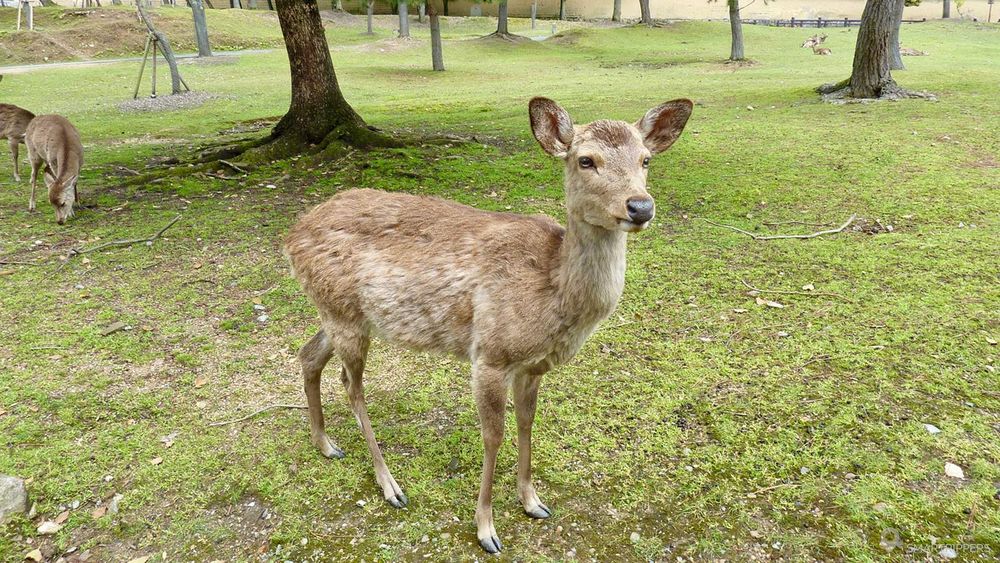
After passing through the large Nandai-mon gate, the main driveway continues for another 200 metres before reaching the main temple enclosure.
2The history of the Tōdai-ji
The Tōdai-ji story begins in 728. Little by little, the temple grew and became more important, especially when the capital of Japan was moved to Nara in 743, when the construction of the huge bronze Buddha, housed within the Daibutsu-den, began. In 752, the whole building was completed by annexed buildings. The Tōdai-ji, which became famous, entered an important area of influence. One comes from all over Japan, so much so that Emperor Kammu decided to flee Nara in 784 to Nagaoka (more than 400 km away) in order to escape from religious authority, it is said, even if other motives were also mentioned.
The temple was then rebuilt several times, following earthquakes or wars. The structure visible today dates from 1709.
If you are interested in the entire history of Tōdai-ji, you can visit the official website for a complete history.
3The Daibutsu-den: the impressive hall of the Tōdai-ji
Once you have reached the second wooden door that marks the entrance to the main enclosure, you will have to pay the 500 u00a5 admission fee / 300 u00a5 for children. Once the formality is completed, you will discover the imposing Daibutsu-den, the immense wooden building that houses a large bronze Buddha.
It is at this moment that we realizes the immensity of the building!
The temple is really huge with its 57 meters long for 50 meters wide and 48 meters high. And still, it is important to know that the length of the current building represents only 2/3 of the original building which was even bigger! In fact, during its last reconstruction in 1692, the building was cut to its width because the budget was not sufficient. On the other hand, its height and depth remain unchanged and are faithful to the original construction.
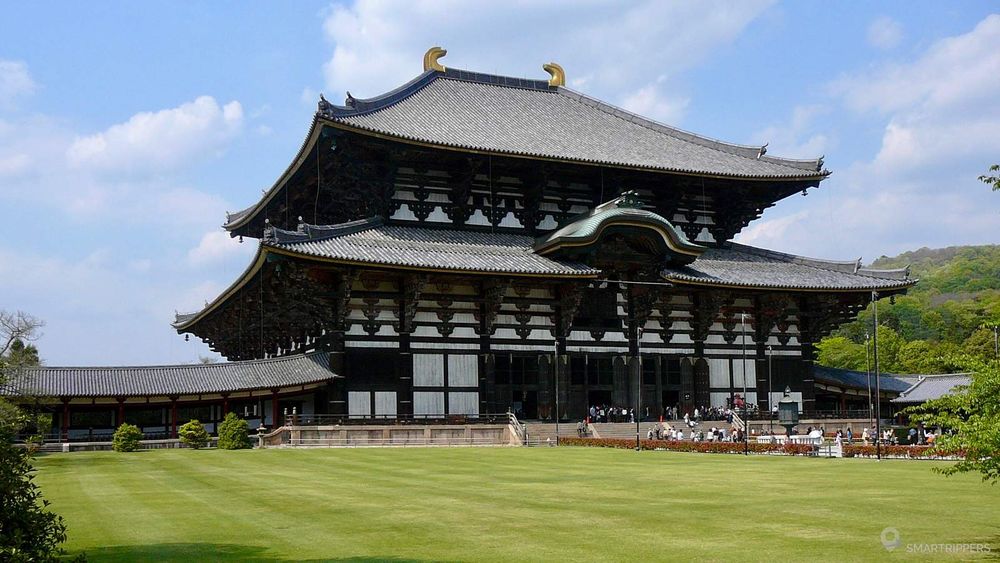
The photos do not pay homage to him because we don't realize his size. After passing through the gate of the enclosure, 90 meters still separate us from the big building. In the courtyard, the green spaces are impeccably maintained.
We now arrive in front of the 3 huge wooden doors of the Daibutsu-den. Like everything else, they're outrageous! It feels so small! Besides, I don't dare to imagine their weight when you have to push them.
Once inside the temple, we discover the Daibutsu, an immense Buddha of bronze 15 meters high and weighing about 300 tons! He's very impressive! It represents Vairocana (not to be confused with Siddhārtha Gautama) and is surrounded by two smaller wooden statues (boddhisattva or guardians of the Buddha). Other statues are also present in the Daibutsu-den enclosure.
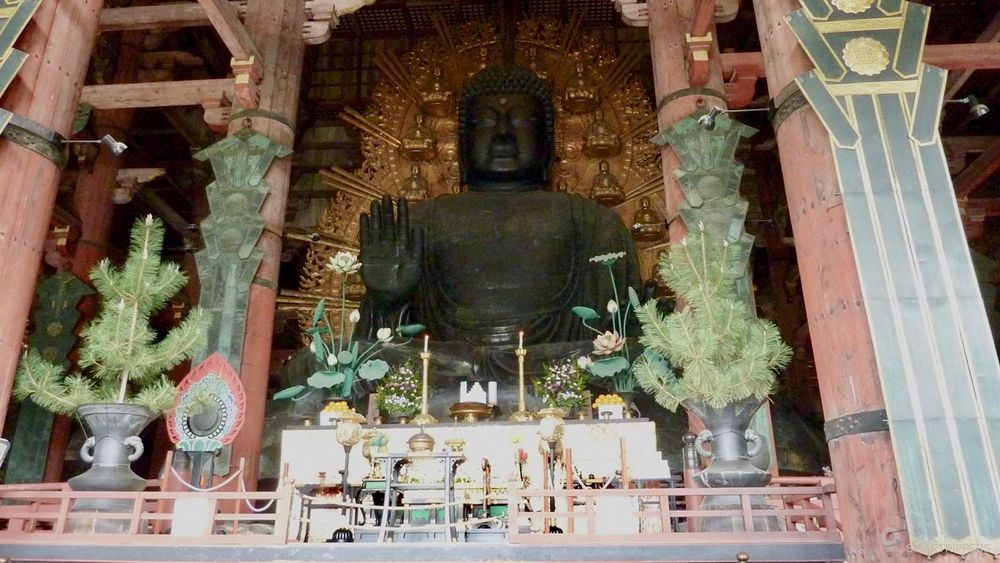
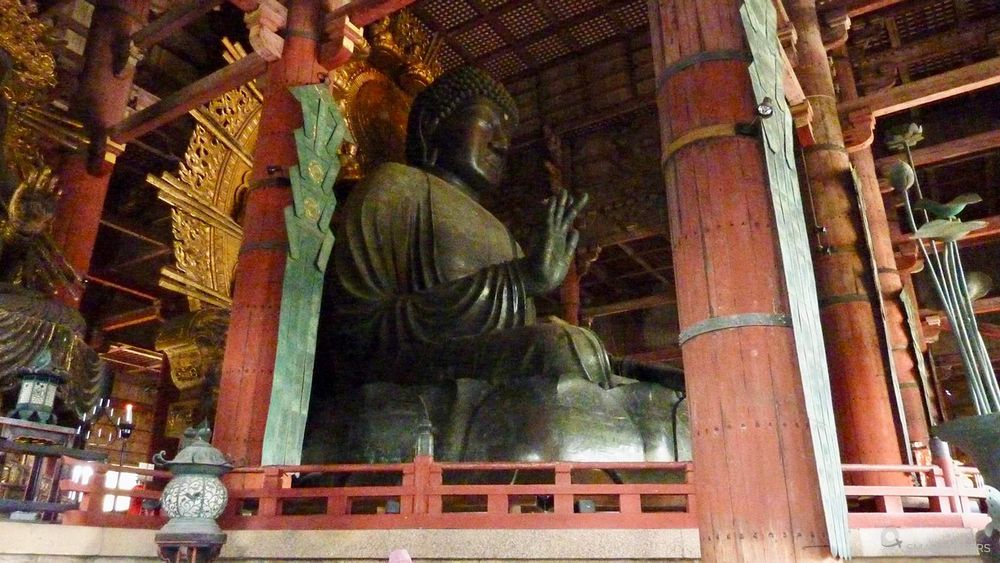
A little further on, a model of the whole building allows us to realize the scale of the construction, knowing that the temple was not limited to the main building but that it was also framed by two huge pagodas of more than 100 meters high, now disappeared.
As we walk around the temple, something strange draws our attention. One of the wooden poles is drilled at its base. The size of the hole would correspond to the size of the nostrils of the Daibutsu, the large bronze Buddha. Legend has it that those who pass through the orifice will reach enlightenment in their next life! That's why you'll see a lot of people go head first into the little hole, which has become a sort of attraction today!
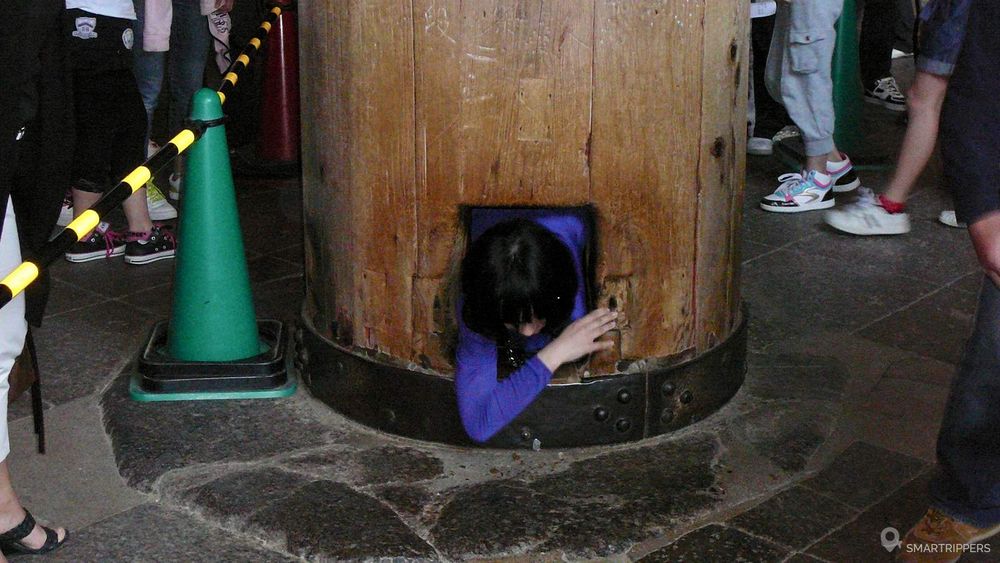
To avoid the crowds, we recommend that you discover the Tōdai-ji, ideally at the beginning of the day, around 8:00 am. Be careful because it closes early, between 4:30 p. m. in the winter and 5:30 p. m. in the summer.
4The Tōdai-ji Museum
After the visit of the temple, you can also discover the museum adjacent to the Tōdai-ji, located near the Nandai-mon gate. It proposes to discover a large collection of religious objects as well as many statues. Admission will cost 500 (for the museum only) /300Y for children, or 800Y if you combine the museum and Daibutsu-den / 400Y for children.
The imposing building, really huge when you're next door!
The feeling of power and serenity of the place.
The pleasant setting near the gardens, close to the fallow deer.
A lot of crowds! Prefer the very beginning of the day to discover the temple.
We are Sandrine and Flo, French thirty-somethings. In 2019 we quit everything to live our dream, become nomads and travel around the world. We left with our baby, Lena, who was only 5 months old at the time. After a first trip around the Pacific Ocean by plane and a long 3 months stay in Hawaii, we left to discover Iceland for 3 months on board our 4WD pickup truck and truck camper. Then we continued our adventure in North America.

Today, if we can continue this adventure, it is above all thanks to our blog, Smartrippers! We created it one day in 2016, with the desire to share our good travel tips, without thinking that it would lead us there! We have developed it a lot over the years and have become experts on our 3 favorite destinations: Hawaii, Iceland and the American West. We now guide you to these destinations to help you plan the trip of your dreams!
Follow our adventures!